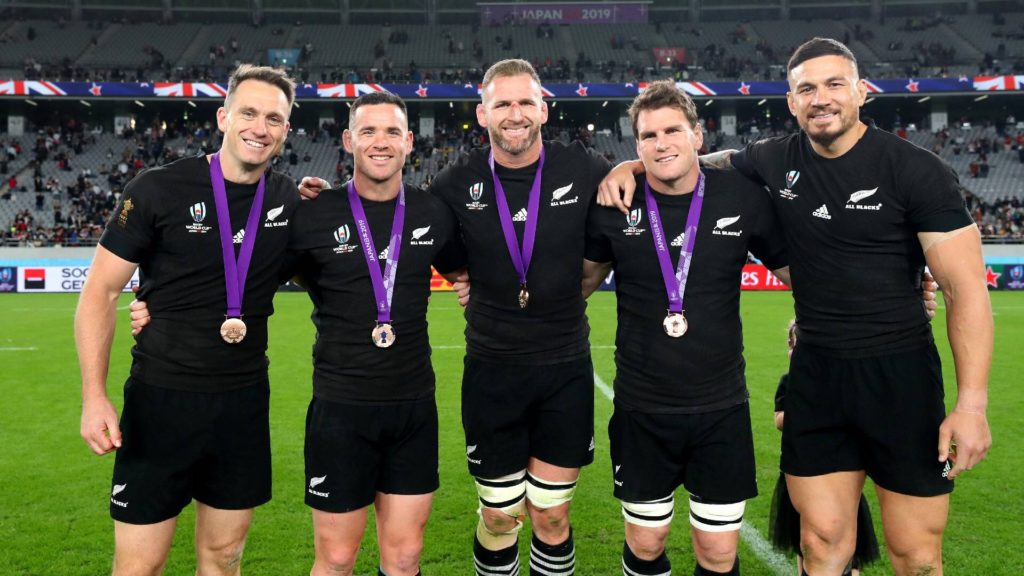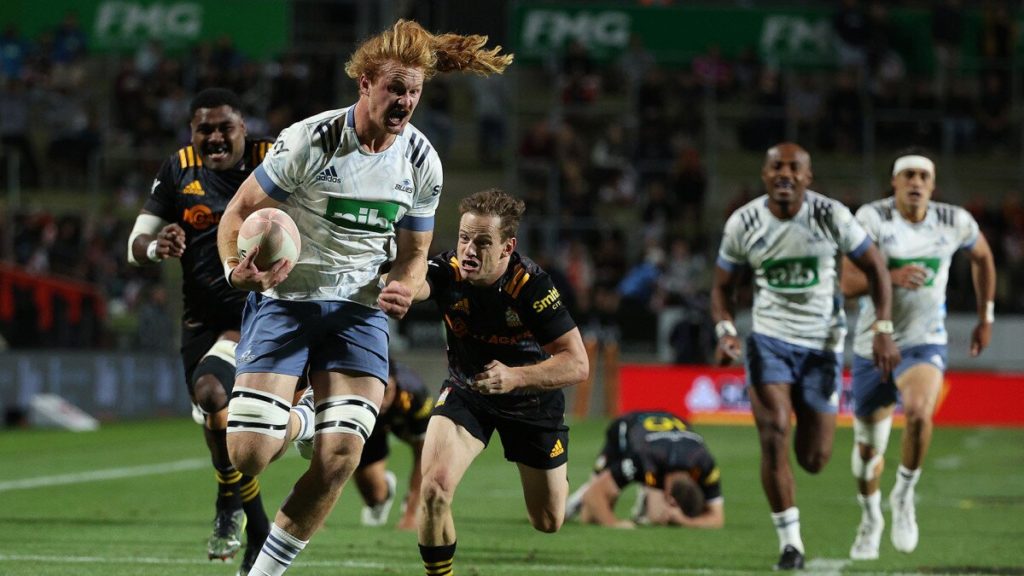The All Blacks will announce their first squad of the year on June 21. They are expected to name 36 players for the Pasifika Series which will see them play Tonga and Fiji twice.
Between now and the announcement, media channels – mainstream and social – will be flooded with best guess predictions and no doubt a few bold declarations labelled as exclusives about who is in and who is out.
There is a whole news industry built on guessing squads and trying to be the first, or indeed the only person, to herald the arrival of a surprising choice in the national set-up.
This year presents a particularly difficult task in the art of prediction as there remain a number of unknowns and almost unprecedented complications to consider.
What we know is this: that the arrival of COVID last year reduced the All Blacks to playing just six tests – split between Australia and Argentina – and scuppered coach Ian Foster’s plans to start rebuilding a wide base of test-quality players.
That was the initial plan for 2020. Having lost the likes of Kieran Read, Sonny Bill Williams, Ben Smith, Ryan Crotty and Matt Todd to retirement and Brodie Retallick on a short-term contract to Japan, the All Blacks needed to rebuild in specific areas.

They also needed to adapt and evolve their game to be able to cope better with the muscular, conservative approach favoured by the likes of England, Ireland and South Africa.
Only being able to play six tests prevented either goal from being successfully achieved and hence the mission in 2021 is to tackle what couldn’t be done in 2020.
The net was cast relatively wide last year to start that process of blooding new players and building depth and experience. Typically, the All Blacks will pick a higher number of uncapped players in the first year of a World Cup cycle than at any other stage and that was the case last year.
In came Alex Hodgman, George Bower, Tupou Vai’i, Cullen Grace, Hoskins Sotutu, Caleb Clarke, Peter Umaga-Jensen and Will Jordan, while a few others such as Tyrel Lomax, Braydon Ennor, Akira Ioane and Asafo Aumua were recalled after brief stints with the team in the past.
The clock, to some extent, is ticking on the need to build depth and experience ahead of the next World Cup cycle.
Having picked so many new faces last year, it would seem unlikely that Foster will want to litter the 2021 squad with too many more. Instead, he will want to work with mostly the same group and build some established patterns, systems and combinations to give the All Blacks a range of ways they can play depending on the opposition.
For much of the professional age the All Blacks were world leaders in the production of multi-skilled props – the likes of Tony Woodcock, Charlie Faumuina and John Afoa being superb ball players and scrummagers.
In no particular order, the list of position-specific goals includes a need to find and or develop mobile, ball-carrying props who can tackle, pass, catch and run as well as they can scrummage.
This is an area of the game where the All Blacks feel they fell behind the likes of England and Ireland towards the end of the last World Cup cycle. For much of the professional age the All Blacks were world leaders in the production of multi-skilled props – the likes of Tony Woodcock, Charlie Faumuina and John Afoa being superb ball players and scrummagers.
But by late 2018 it wasn’t apparent the All Blacks had lost their way in that respect. Karl Tu’inukuafe, Nepo Laulala and Owen Franks featured heavily that year – none of whom produced the sort of high work-rate around the field that the likes of Kyle Sinckler, Cian Healey and Tadhg Furlong were delivering for England and Ireland respectively.
There was an obvious lift in performance from a number of front-rowers in 2020, with Joe Moody, Ofa Tuungafasi, Laulala and Tu’inukuafe all showing up much better around the field and new players, Alex Hodgman and Tyrel Loamx also coming into the squad on the strength of their mobility.
It’s an area that never sleeps, though and one that the All Blacks will never feel they have nailed down. Super Rugby saw Hodgman, Laulala, Tu’inukuafe and Tuungafasi take an age to find their form, Lomax was a liability at times with his high tackling which saw him red and yellow carded, while Moody missed much of the campaign with injury.

What’s made the selection process more interesting is not just the return from injury of Atu Moli – the bruising Chiefs prop who went to the World Cup with the All Blacks in 2019 – and the continued good form of George Bower, but the emergence of a number of young, intriguing options in Ethan de Groot, Aidan Ross and Tamaiti Williams.
De Groot is the Southland-raised fire cracker who comes off the bench for the Highlanders most games and makes his presence felt with his aggression and willingness to throw himself about. He brings an old school mentality to impose himself with a modern desire to play on his feet and be involved everywhere and not just the set-piece.
Ross is a man the All Blacks have tracked for a while, but a broken ankle in 2018 set him back. This year, though, he’s been a leader in a surprisingly powerful Chiefs’ scrum and has held up well against everyone he has faced.
Williams is 140kg of beast – a thundering great hunk of humanity who has an enormous amount to learn, but showed up well in his few appearances for the Crusaders. As Crusaders coach Scott Robertson said ahead of Williams making his debut this year: “Tamaiti is a big human. He can play both sides [of the scrum] which is pretty incredible for a man that is six-five and 130kg-plus.”
Williams has been named in the New Zealand Maori team which means he won’t be in the All Blacks for the July series but is a player of significant interest.
If there is a wildcard guess to be made about possible new players, then de Groot is as good as any other suggestion.
If there are going to be new players in the back-row, the short-list from which they will come includes just two names: Tom Robinson and Ethan Blackadder.
Not that anyone should be expecting too many new players to be announced for the July tests. The return from Japan of Retallick almost ties up the locks with him, Sam Whitelock, Scott Barrett and Patrick Tuipulotu certain to be named and potentially Tupou Vai’i being included depending on how the All Blacks want to set themselves up.
There are three hookers in Dane Coles, Codie Taylor and Asafo Aumua who are head and shoulders the best in the country and in the loose forwards the problem will be fitting everyone in.
There are a few certainties: there will be no Sam Cane who is injured and Ardie Savea and Dalton Papalii are non-negotiables given their respective form. Presumably Luke Jacobson has done enough to earn a recall and Akira Ioane and Hoskins Sotutu probably played well enough in the last rounds of Super Rugby Trans-Tasman to win back their spots. Ioane’s absence from the Maori All Blacks squad all but confirms his continued selection in the national team.
If there are going to be new players in the back-row, the short-list from which they will come includes just two names: Tom Robinson and Ethan Blackadder.
The former brings a different physique and skill-set to No 6 while the latter brought a crunch that the All Blacks are looking for in their quest to learn the art of subduing physical opposition.

As Foster said last year after his side had lost to Argentina for the first time in history: “The physicality is a constant work on, but we believe if we get some better decisions and more variety then that will take care of itself.
“We have made sure that we have had some hard conversations where we didn’t feel that we were up to our level. What happened two weeks ago was we weren’t smart enough.
“We didn’t use enough of our kicking options. We didn’t maximise our opportunities in the early phases and we didn’t go to where the space was.”
Which neatly brings us to the question of decision-making and strategic direction. The only real question to be asked here is whether TJ Perenara, having spent the club season in Japan, will win a place as the third halfback or whether Finlay Christie of the Blues has done enough to earn a chance to see what he can do at the next level.
The All Blacks backline is ridiculously rich with talent and versatility and when Caleb Clarke returns from Olympic duty and Jack Goodhue recovers from serious injury, there will be some big name players squeezed out of the squad.
Beauden Barrett and Richie Mo’unga will both be picked at No 10 with Damian McKenzie likely being deemed enough back-up to prevent the impressive Mitch Hunt from earning a call-up.
In fact, probably the only new faces we are potentially going to see in the backline, other than possibly Christie, are Leicester Fainga’anuku and Salesi Rayasi.
Fainga’anuku is going to be hard to leave out because at 109kg and 1.88m he’s a near like-for-like replacement for Caleb Clarke who has committed to playing sevens. The 22-year-old Crusader has had a brilliant 2021 where he has shown he can play as effectively at centre as he can on the wing and such versatility is in high demand.
Rayasi has been powerful and skilful – bringing a booming left boot into play for the Hurricanes and an ability to make things happen when there hasn’t appeared to be much on.
The All Blacks backline is ridiculously rich with talent and versatility and when Caleb Clarke returns from Olympic duty and Jack Goodhue recovers from serious injury, there will be some big name players squeezed out of the squad.
But for now, the best bet is that we won’t see too many new faces or unexpected omissions. For the short term at least, it will be steady as she goes for the All Blacks.


Comments
Join free and tell us what you really think!
Sign up for free